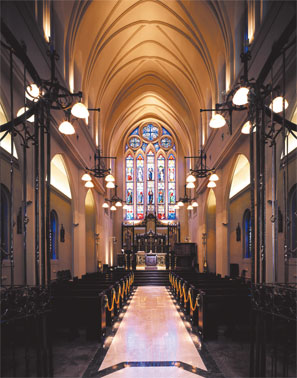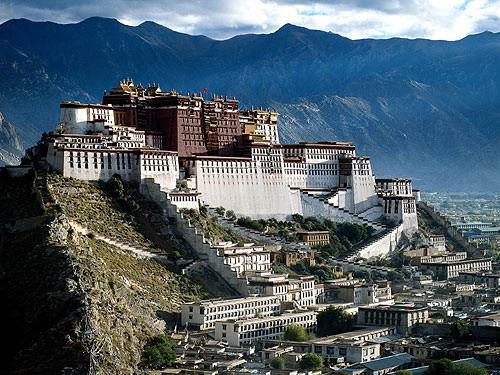July 2010's challenge is brought to us by our own Wordman and the good folk at Indie Press Revolution and involves a prize to the winner of a
two hundred dollar gift certificate to IPR!
Many cultures in history believed that the land contains networks of energy that travel along particular paths, sometimes called "ley lines" or "dragon lines". Usually, there are thought to be key "nexus points" of particularly strong energy within the network of paths. Consequently, such paths are sometimes features of fiction and role-playing games.
This month's challenge assumes a world (fantasy, modern, sci-fi, whatever) where such lines not only exist, but where these "nexus points" form places of power that can be tapped, controlled and harnessed by constructing a "locus" over, in or around them. In this month's challenge, you will map such a locus.
No, not that kind of Locus.
A "locus" is a building (or series of buildings) specifically built to route and focus the energy of the site into a central point, sometimes called the "omphalos". But not just any building can be a locus. To work, the geometry of the construction needs to work with the type of energy found site, as well as its natural geography. In particular, each locus must be made with some restrictions in mind:
1) No locus harnesses "pure" energy. Every locus has a, for lack of a better word, a "flavor" of energy, based on type of terrain in which it is constructed. A locus built on a volcanic site, for example, might focus "fire" energy. One built on a swamp might harness "decay". One in a forest could gather "life" energy, while one built on high cliffs might collect the power of the "wind" or, perhaps, the "sun". You need to choose a flavor for your locus, and how it is influenced by the surrounding terrain. Maybe you show this terrain in your map, maybe you don't.
2) The locus is more stable if its architecture matches its flavor. For example, a stone locus might feature strong, angular walls, while an air locus might have lofty, vaulted ceilings.
3) Every locus has a room built specifically to be the omphalos, the centerpoint into which all the energy is focused. This room might also be something else (e.g. throne room, prison, factory) but it doesn't have to be. Its primary purpose is to collect the energy. What is done with it? How is it used or stored?
4) Some loci are more powerful than others. The stronger the locus, the more rooms of the building need to be specifically dedicated to directing and harnessing energy. Most need between three and six such rooms. The most powerful loci might need up to ten. A weaker locus would only need one or two. How many rooms does your locus need? How do these rooms fit into your map? How do they direct energy to the omphalos? Are the rooms also used for something else?
5) The stronger the locus is, the more likely it is to be an important center of some kind. As a result, a locus (particularly a powerful one) often has many additional rooms, or even buildings, that don't add to the geomancy of the site, but rather serve those who maintain it. Cities sometimes grow around the most powerful loci. Often, strong sites takes on a function of their own (e.g. political center, cultural center, fortress, monastery, etc.). Weaker sites sometimes avoid this fate, becoming abandoned and forgotten by their builders. Is your locus populated? Does it serve another purpose? Who is allowed there? Who knows of its existence?
Wordman is asking for no claim on entrants or the winning entry, so licensing is up to you.
=================
LEGAL MUMBO JUMBO
=================
Any member of the Cartographer's Guild is eligible to enter the monthly challenge.
No update to an entry will be permitted once the threads are locked for voting. Moderators will inform members of the impending lock down whenever someone remembers, which is somewhat iffy.
Challenge will usually be locked down about five days prior to the end of the month, with a new challenge being posted sometime between then and the beginning of the next month.
All are encouraged to enter the monthly challenge. Only one (or maybe two) win the challenge each time, but everyone who enters learns something about their craft and makes the event more fun for all involved.
A stitch in time saves nine.

















 Reply With Quote
Reply With Quote